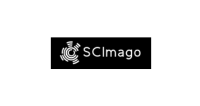RAÇÕES CONTENDO MILHETO OU SORGO E COM SUPLEMENTAÇÃO DE AMINOÁCIDOS PARA SUÍNOS EM TERMINAÇÃO
DOI:
https://doi.org/10.5380/avs.v12i1.9230Palavras-chave:
Alimentos alternativos, nutrição animal, restrição energética, animal nutrition, energy restriction, feedstuffsResumo
O experimento foi realizado no Departamento de Zootecnia da Universidade Federal de Lavras
para avaliar a influência de rações contendo milheto ou sorgo, suplementadas com aminoácidos, no
desempenho e características de carcaça de suínos em terminação. Utilizaram-se 27 suínos machos
castrados com peso vivo médio de 69,0 ± 2,8 kg que foram alojados individualmente em baias de concreto. O
delineamento experimental utilizado foi o inteiramente ao acaso com três tratamentos (T1 - Ração controle:
formulada à base de milho e farelo de soja; T2 – Ração milheto: formulada com milheto e L-lisina; T3 – Ração
sorgo: formulada com sorgo, L-lisina e L-treonina.). Em todos os tratamentos as rações foram suplementadas
com minerais e vitaminas. Os suínos das rações controle apresentaram maior (P<0,05) peso final, consumo
médio de ração, ganho médio de peso e melhor conversão alimentar (P<0,05) quando comparados aos
animais que consumiram a ração com sorgo. Não houve diferenças (P>0,05) na área de olho do lombo e peso
do pernil entre os tratamentos. O grupo de animais consumindo a ração contendo sorgo apresentou menor
(P<0,05) espessura de toucinho em relação aos animais das rações controle e milheto, que por sua vez foram
semelhantes (P>0,05) entre si. Conclui-se que rações formuladas exclusivamente com milheto ou sorgo e
suplementadas com aminoácidos reduzem o desempenho de suínosemterminação, embora a ração contendo
sorgo, L-lisina e L-treonina pode ser utilizada para reduzir a gordura da carcaça.
Downloads
Publicado
Como Citar
Edição
Seção
Licença
Autores que publicam nesta revista concordam com os seguintes termos:
- Autores mantém os direitos autorais e concedem à revista o direito de primeira publicação, com o trabalho simultaneamente licenciado sob a Creative Commons - Atribuição 4.0 Internacional que permite o compartilhamento do trabalho com reconhecimento da autoria e publicação inicial nesta revista.
- Autores têm autorização para assumir contratos adicionais separadamente, para distribuição não-exclusiva da versão do trabalho publicada nesta revista (ex.: publicar em repositório institucional ou como capítulo de livro), com reconhecimento de autoria e publicação inicial nesta revista.
- Autores têm permissão e são estimulados a publicar e distribuir seu trabalho online (ex.: em repositórios institucionais ou na sua página pessoal) a qualquer ponto antes ou durante o processo editorial, já que isso pode gerar alterações produtivas, bem como aumentar o impacto e a citação do trabalho publicado.













